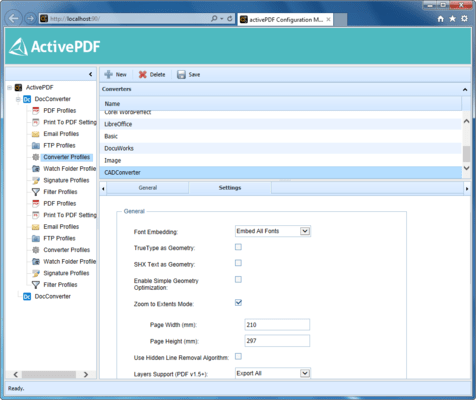

Most respondents agreed that they were interested in receiving push notifications on their phone about healthy options on post (64.5%) and that receiving these messages would help them eat healthier (68.3%). We also report data on interest in the approach from a Fort Bragg community health assessment survey (n = 3281). We measured success based on outcomes of a formative evaluation, including process, resources, management, and scientific assessment. Thus, we conducted a formative feasibility study of a military post to understand the development, interest in, and implementation of EatWellNow, a multi-layered interactive food environment approach using contextual messaging to improve food purchasing decisions within the military food environment. There is little published literature regarding the feasibility of this approach to promote healthy behaviors in retail food environments.
#ACTIVE PDF TOOLKIT BLUETOOTH#
Two complementary technological methods to raise awareness are geofencing (deliver banner ads with website links) and Bluetooth beacons (real-time geotargeted messages to mobile phones that enter a designated space).


Innovative approaches are needed to change interactions with the military food environment. Research involving army soldiers suggests a lack of awareness of healthy foods on post. Emerging themes comprised “Opportunities to Improve Toolkit and Action Plan Guide Functionality,” the “Sociopolitical Landscape Affects Toolkit Implementation,” and the “Sociopolitical and Physical Landscapes Affect the Toolkit’s Value and Utility.” This study provides concrete lessons for the CACHE Toolkit and other public health-based military initiatives.Īpproximately 17% of military service members are obese. Although >80% of participants agreed the built environment affects healthy living, only 44%, 53%, and 35% agreed their installations’ built environments promoted healthy eating, physical activity, and tobacco-free living, respectively. Baseline data included a knowledge, attitudes, and beliefs survey (N = 34) post-Toolkit implementation data included focus groups (N = 2) and interviews (N = 10). This study sought to improve its implementation process and assess subsequent Action Plan Guides’ utility at 5 military installations. The US Army Public Health Center developed the Creating Active Communities and Healthy Environments (CACHE) Toolkit to help military installations evaluate the quality of their built environments relative to healthy eating, physical activity, and tobacco-free living.


 0 kommentar(er)
0 kommentar(er)
